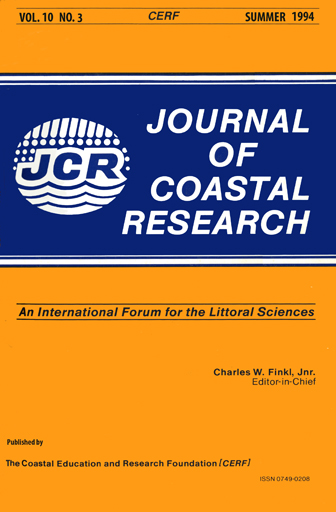Mineralogy and Textures of Beach Sands in Relation to Erosion and Accretion Along the Rosetta Promontory of the Nile Delta, Egypt
Keywords:
Heavy minerals, beach erosion, beach accretion, Nile delta, sediment dispersalAbstract
The Rosetta promontory on the western coast of the Nile delta has been subjected to severe erosion. Spatial and temporal shoreline changes have been estimated from ground survey data obtained between 1971 and 1992. The data consist of 45 beach profiles along 45 km of coast. Shoreline erosion rates are higher along the promontory tip (52.9 to 102.2/yr). They progressively decrease with longshore distance both to the east and to the southwest. Four nodal points, two at each side of the river mouth, are areas where this erosion is reversed to accretion (1.3 to 20.4 m/yr). This accretion changes again to erosion beyond which erosion is continued (1.3 to 3.7 m/yr). Beach-face samples were collected at each profile line and were texturally and mineralogically analyzed to relate the sediment characteristics to beach changes. The erosion/accretion pattern along the Rosetta promontory is reflected in the heavy mineral concentrations and grain size variations of beach samples. The heavy minerals are more abundant in the liner sand and are concentrated near the river mouth, reaching 80 to 92% , then systematically decrease with longshore distance, being reduced to less than 25% both to the east and to the southwest where coarser sand is accumulated along accreted zones. Two mineral groups correspond to selective-sorting patterns: (1) Garnet and high-density opaques comprise the finest grains which tend to concentrate on the eroded promontory tip, then progressively decrease east and southwest. (2) Lower density minerals (coarsest grains), hornblende, augite and epidote are transported from eroded areas and systematically increase in percentage with distance from the river mouth both to the east and to the southwest and are deposited in the stretches of accreting shoreline; i.e. with the longshore transport and decreasing erosion. This means that size-density sorting is a function of the transportability. This study also emphasizes the close relationship among grain sizes of total samples, heavy mineral concentrations and heavy mineral assemblages as related to advancing and retreating shorelines.


